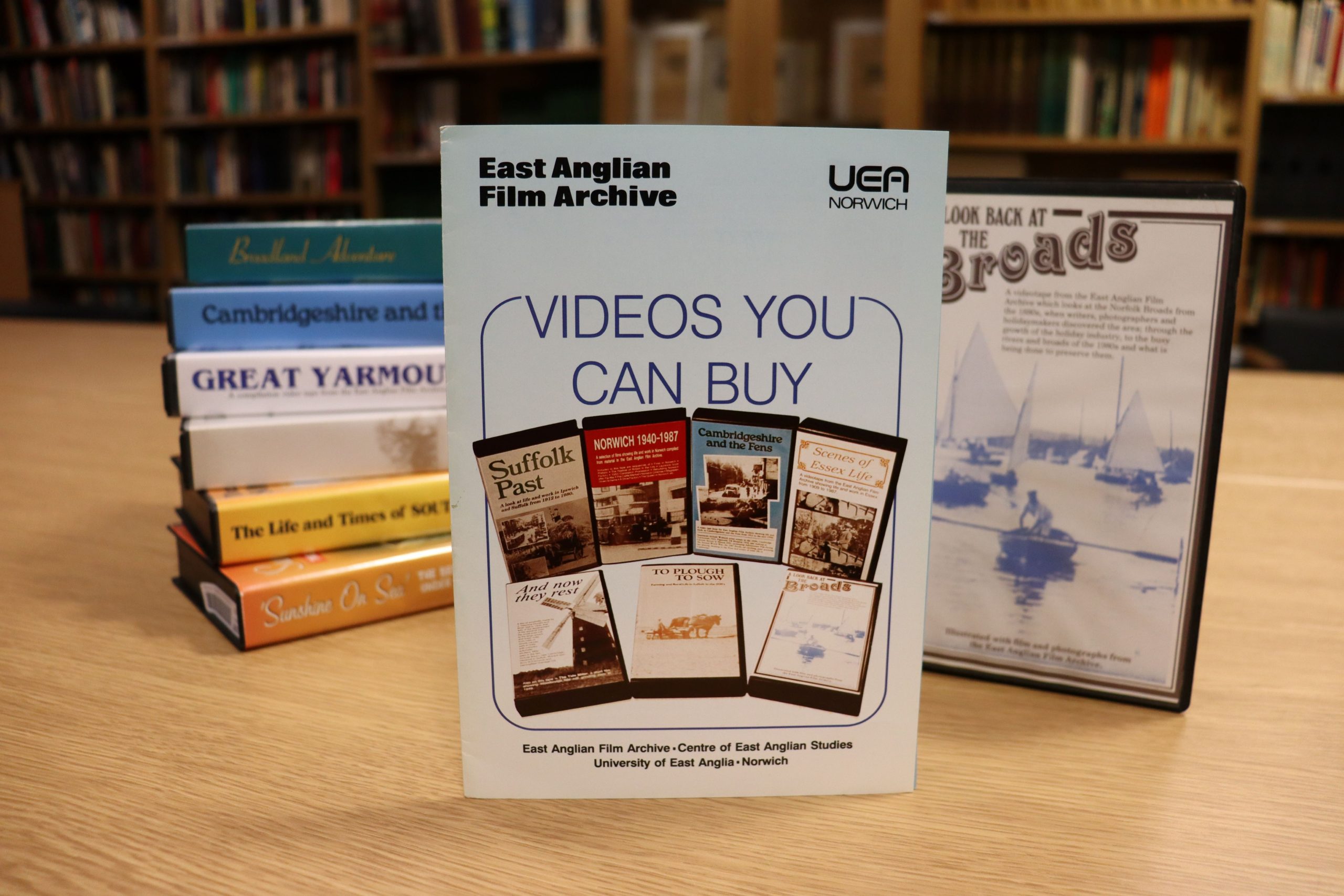The East Anglian Film Archive (EAFA) explains the special contribution film makes in the telling of local history. In a race against time to ensure the survival of compilation VHS tapes crucial to understanding East Anglian heritage and culture, roll on with the EAFA to discover how archivists are preserving audiovisual snapshots of our local histories.
Postgraduate researcher Olivia Croyle of the East Anglian Film Archive shares preliminary findings from a project to bring local history back from the brink of video obsolescence.
A Look Back at Sudbury, Do You Remember? Ipswich, Scenes of Essex Life. These are some of the titles from a collection of over 50 VHS tapes produced and sold to the public by the East Anglian Film Archive (EAFA) from the 1980s to the early 2000s.

Before the Archive had a website, these tapes were one of the ways EAFA made its collection accessible to the public. Now they are archive pieces themselves. The VHS format, meanwhile, is at high risk of obsolescence since playback devices are ageing and difficult to replace. For this reason, EAFA is undertaking a project to digitise this collection. This will preserve not only a valuable source of local history but also the history of the Archive itself. With the help of a team of UEA student volunteers who are learning to digitise the tapes, we will be able to save these videos for the future.
East Anglia on Video

The compilations offer a miscellany of local history footage from professional productions, local newsreels, and amateur home movies held in the archive. One moment you can be watching sleepy village scenes from the 1930s, the next a 1980s promotional video showing off technological innovations at a factory.
Take Sheringham, a 40-minute exploration of the North Norfolk seaside town. The compilation starts with sunny scenes of holiday makers and regattas. But it’s not all ‘jollificearshuns’ (Norfolk dialect for fun and games).
The video also features a film of a 1939 aid raid drill. Some participants take this more seriously than others. For example, a nurse is struck down by a fit of the giggles while being rescued from a firework set off on a garden path to simulate an incendiary bomb.

Following that, in footage from 1961, RAF veteran Tom Starling pauses in his garden. Thereupon he recounts his sighting of Old Shuck, a monstrous dog of local folklore. Afterwards, viewers join the crew of the ‘Never Can Tell’ for a 5am crab fishing expedition filmed in 1955.

Presenting the Region’s Past
To guide viewers through these anthologies of East Anglian life, the videos included commentaries by archive staff, local historians and other experts. And sometimes the film makers themselves. The compilations are made up of footage that exists on film elsewhere in the archive. However, these commentaries are unique to this collection of tapes.
“There was no more lovely sight than that of three or four pairs of Suffolks working a field on a fine day.”
James Blewitt of boxted hall farm, essex
James Blewitt, recorded in the 1990s, recalls the shiny coats of Suffolk Punch horses while watching footage of Boxted Hall Farm in Essex, filmed by his father in 1925. Blewitt’s and other voices heard on the Farmer’s Films compilation highlight how much agricultural practices have changed. Meanwhile, they reveal the human side of farming too.

Herding sheep at Boxted Hall Farm, Essex.
Courtesy of East Anglian Film Archive, University of East Anglia – Not cleared for social media.
The East Anglian environment is not always so serene, with natural disasters also documented in the collection. Flood! opens with shots of water surging through fields and streets. Cut to a professor from the University of East Anglia’s School of Environmental Sciences. He warns of the dangers of building on flood plains, presenting as evidence the devastation captured on film throughout the region from 1912 to 1953.
Overall, from the nostalgic to the cautionary, these curated videos not only offer a glimpse of the past but also reveal how East Anglia saw itself at various moments in time and how EAFA chose to present its collection.
In digitising these tapes, EAFA will preserve the layers of interpretation that have built on the material in its collection. The compilations are a reminder that the history of a film does not end when it is accessioned into the Archive.
About the East Anglian Film Archive
Founded in 1976, the East Anglian Film Archive (EAFA) was the UK’s first regional film archive. From its pioneering roots it has evolved into the accredited regional film archive for the East of England and supports research and teaching within the University of East Anglia.
EAFA’s screen collection comprises many thousands of items and approximately 50,000 hours of footage across film and video formats. Highlights include BBC and ITV collections from the golden age of regional television, as well as the internationally significant Institute of Amateur Cinematographers collection.
EAFA makes its collections accessible via projects, research, teaching, a public events programme and licensing material to heritage organisations and broadcasters. Indeed, over 200 hours of footage from EAFA’s collections can be enjoyed for personal viewing on its website.
Written by Olivia Croyle, Postgraduate Researcher at the East Anglian Film Archive
Edited by Jake Doyle, Blog Coordinator for Explore Your Archive, MLitt Archives and Records Management Student and Archive Assistant at Suffolk Archives



